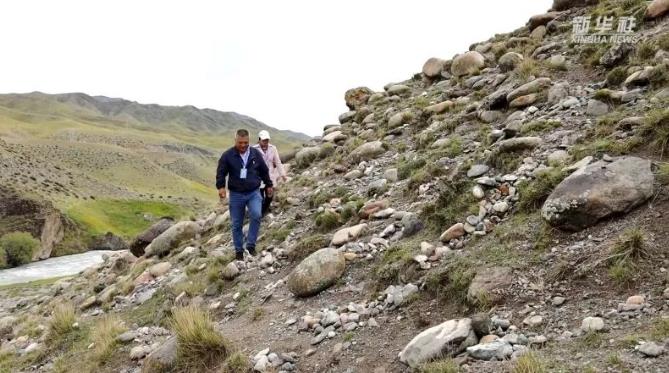Xinjiang farmer becomes guardian of cultural relics


URUMQI — After packing some naan bread and a dented water bottle, Shan Zhizheng and his wife start up their motorcycle and head off to a cultural relic site, shattering the silence that envelops the valley.
It's a round trip of around 150 kilometers and their starting point is the pastoral and farming landscape of Wenquan county in the Mongolian autonomous prefecture of Bortala, Northwest China's Xinjiang Uygur autonomous region.
Known as "a museum without walls", Wenquan county is home to nearly 260 cultural relic sites under various levels of protection, including tombs, cliff paintings and ruins, which provide materials for researching the history of ancient northern nomads and tribes, according to the county cultural relic protection bureau.
Shan and his wife, Yuan Qin, are responsible for protecting one particular relic site that spans about eight square kilometers. Once a week, the couple patrols more than 200 ancient tombs dating back to between the Warring States Period (475-221 BC) and the Han Dynasty (202 BC-AD 220).
Their relic protection routine usually includes walking around the site to look for footprints and motorcycle tracks, keeping records of the tombs, and updating the local cultural relic authorities in a timely manner.
Shan, 49, born and raised in Wenquan, has been working as a field conservator for five years. However, his bond with cultural relics goes back much further.
In 1999, his family was assigned a piece of wasteland covering 20 hectares, with the aim of reclaiming and working it as farmland for their own sustenance.
Quite by chance, Shan found two saddle-shaped millstones in a field that he was farming. At that time, although he noticed abrasion marks on the objects, he didn't know they were cultural relics.
"I thought they were similar to stone tools recorded in history books and were probably not used by modern people. So I took them home on a bicycle," he recalls.
Shan later found several stone tools, bits of pottery and other cultural relics on the wasteland and placed them in his home.
In 2008, when staff members from the Wenquan cultural relic protection bureau went to the farming and pastoral areas to conduct a general survey and popularize knowledge of cultural relics among locals, Shan invited them to his home to identify the "relics" he had found.
Experts estimated that the millstones might belong to the Spring and Autumn (770-476 BC) or the Warring States periods, and that they may provide some insight into the working and living conditions of locals of the time.
The Wenquan county cultural relic protection authorities had long been challenged by the widespread distribution of the relic sites among the county's vast mountainous terrain, coupled with a lack of conservators.
To solve the problem, in 2018, the county assigned 42 field conservators to 26 cultural relic protection units at or above the regional protection level. Shan and Yuan were among them.
"I didn't go to college, but I have been interested in history and geography since childhood. Becoming a relic conservator meant doing what I liked best," Shan says.
Although Shan takes delight in his daily work, there are still many challenges in the role.
Sometimes, the husband-and-wife team has to trek through valleys and rivers as their motorcycle can't cope with the steeper slopes. On a winter day a few years back, Yuan accidentally stepped on a piece of floating ice while crossing a river and fell into the freezing water. She got back to the shore safely, but was soaked to the skin.
However, neither the difficulties nor the occasional tedium of the role have undermined Shan's love for cultural relic preservation.
"On May 18, 2018, I found rock paintings in my patrol area for the first time. Thirteen goats were painted on a large black rock at the top of a slope," he says, adding that the discovery gave him a sense of accomplishment.
As Shan's interest in his career increases, so does his expertise.
During his spare time, he reads books on cultural relics to acquire related knowledge. Additionally, when experts from Xinjiang and Beijing carry out archaeological excavations in Wenquan, he observes their activities on-site and learns from them.
Nowadays, his schedule is growing busier. Besides regular patrols of the tombs, he also guards rock paintings and stone artifacts, and keeps herders informed about cultural relic protection, including the relevant laws and regulations.
In the past few decades, Shan has handed over more than 500 cultural relics to the county and prefecture-level museums in Bortala, most of which were found in the wasteland or during his field patrols.




